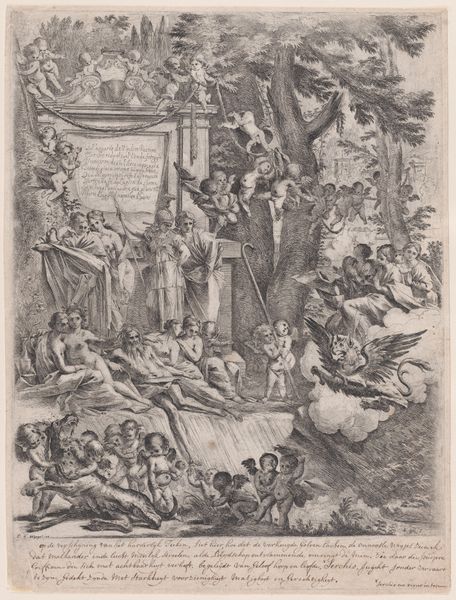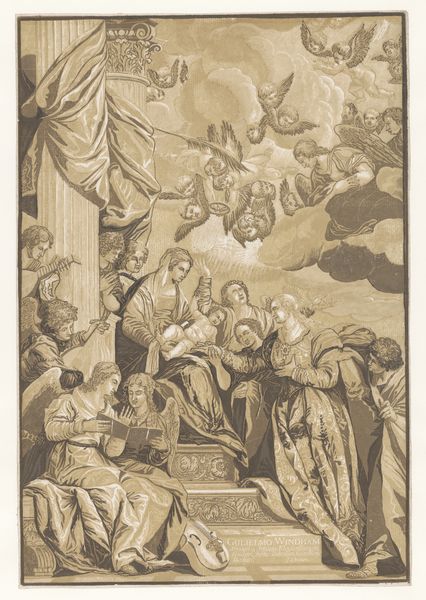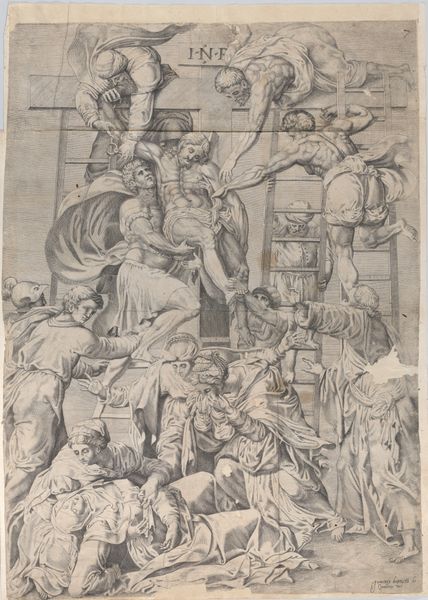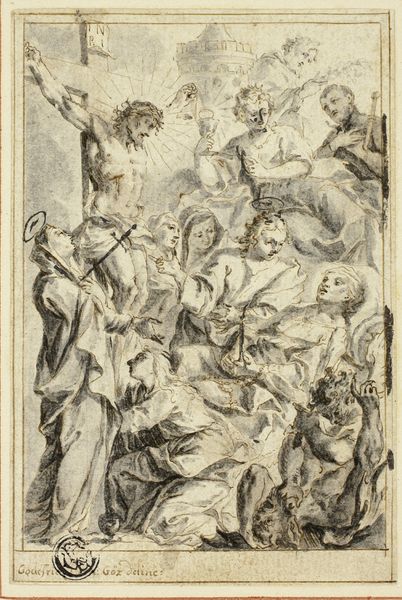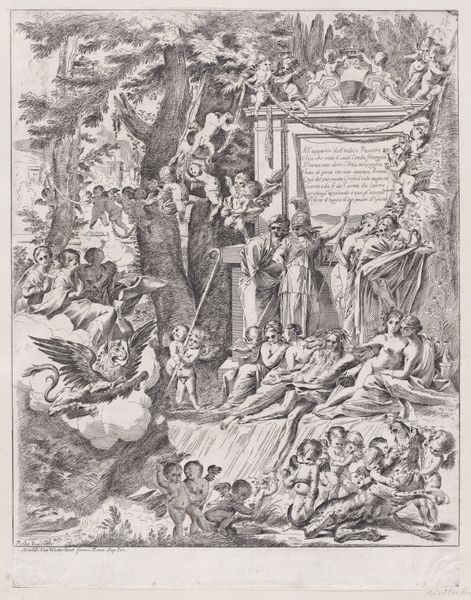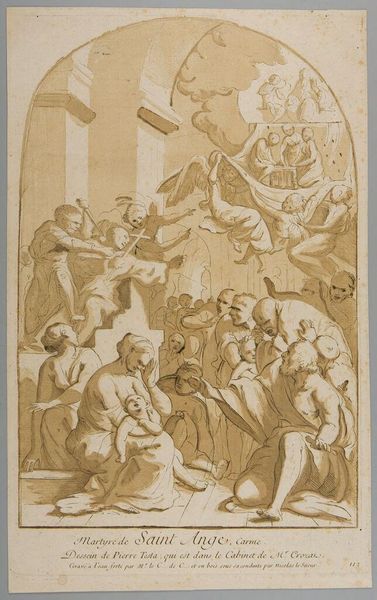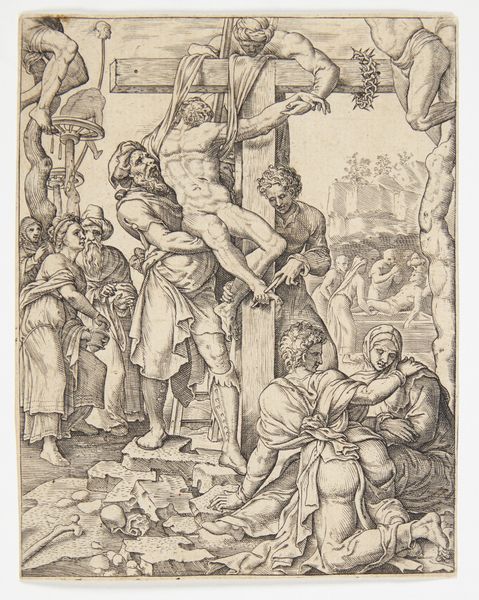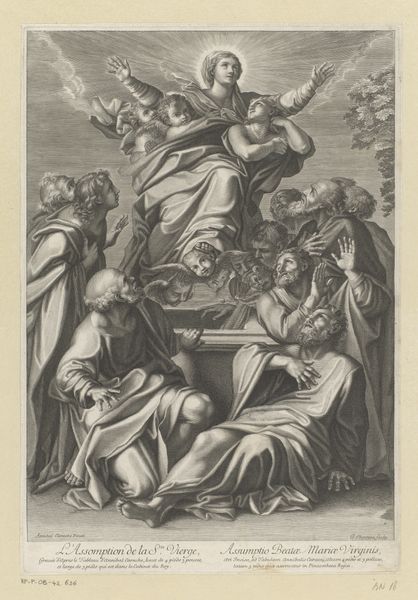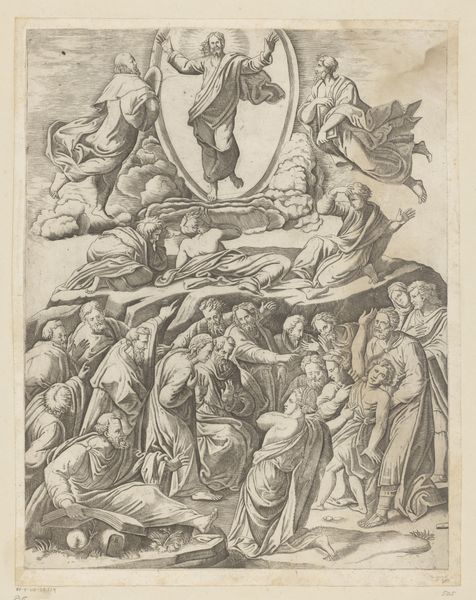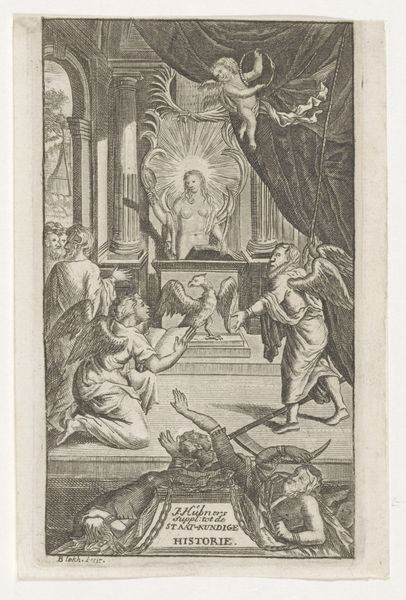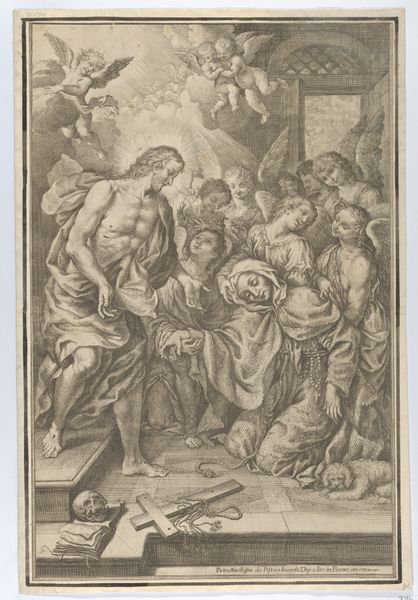
The martyrdom of Saint Angelo who in the upper left is being stabbed watched by horrified onlookers, from the 'Cabinet Crozat' 1729 - 1764
0:00
0:00
drawing, print
#
drawing
#
allegory
#
baroque
# print
#
sketchwork
#
history-painting
Dimensions: Plate: 16 1/8 x 10 1/8 in. (41 x 25.7 cm) Sheet: 21 5/16 x 15 3/8 in. (54.1 x 39 cm)
Copyright: Public Domain
Curator: Here we have a fascinating print, "The Martyrdom of Saint Angelo," dating from between 1729 and 1764. The print's artist is Anne Claude Philippe Caylus and it's currently housed at the Metropolitan Museum of Art. Editor: It's intense. The raw emotion captured with such spare lines—it's like witnessing a communal breakdown in real time. You can feel the terror emanating from the huddled figures at the base of the image. Curator: Indeed. The iconography here is potent. Saint Angelo is depicted being attacked at the altar, juxtaposed with images of adoring cherubs seemingly descending to whisk him away to the afterlife. Notice the upward movement, counterbalanced by the grief-stricken onlookers in the foreground. There’s a definite visual language surrounding martyrdom at play. Editor: I’m particularly drawn to those "onlookers" as you call them. Their reactions are a fascinating study in collective trauma. The way Caylus renders their faces... the mother clutching her child, eyes wide with horror. It serves as a commentary on the public aspect of these events. These martyrdoms, real or imagined, always played a socio-political role. It shows us how public images are shaped by traumatic memories. Curator: That’s right. Saint Angelo, a Carmelite friar, became a martyr in Sicily, and this print serves as a potent cultural marker, reinforcing narratives of religious persecution. The print is after a design of Pierre Tista; the reference at the bottom translates from French identifying Tista as the designer for M. Crozat, who owned the Cabinet the print came from, indicating a social history. Editor: The Cabinet Crozat connection speaks to its distribution, doesn’t it? These prints, as part of a larger collection, would have been circulated amongst a specific audience, further solidifying their worldview and ideals. Art as propaganda, in a way. I wonder who had access to this “Cabinet”, this privileged collection of artwork. Curator: It would have been accessible to a wealthy, educated elite, confirming your reading about a solidifying worldview. This wasn’t mass media. Editor: Ultimately, it highlights art’s constant engagement with power, trauma, and the ways societies construct their heroes and villains. Even a simple sketch, a preliminary design intended as preparation, offers deep insights. Curator: A chilling reminder of history's dramas retold in the language of lines, shadow, and symbolic suffering.
Comments
No comments
Be the first to comment and join the conversation on the ultimate creative platform.
